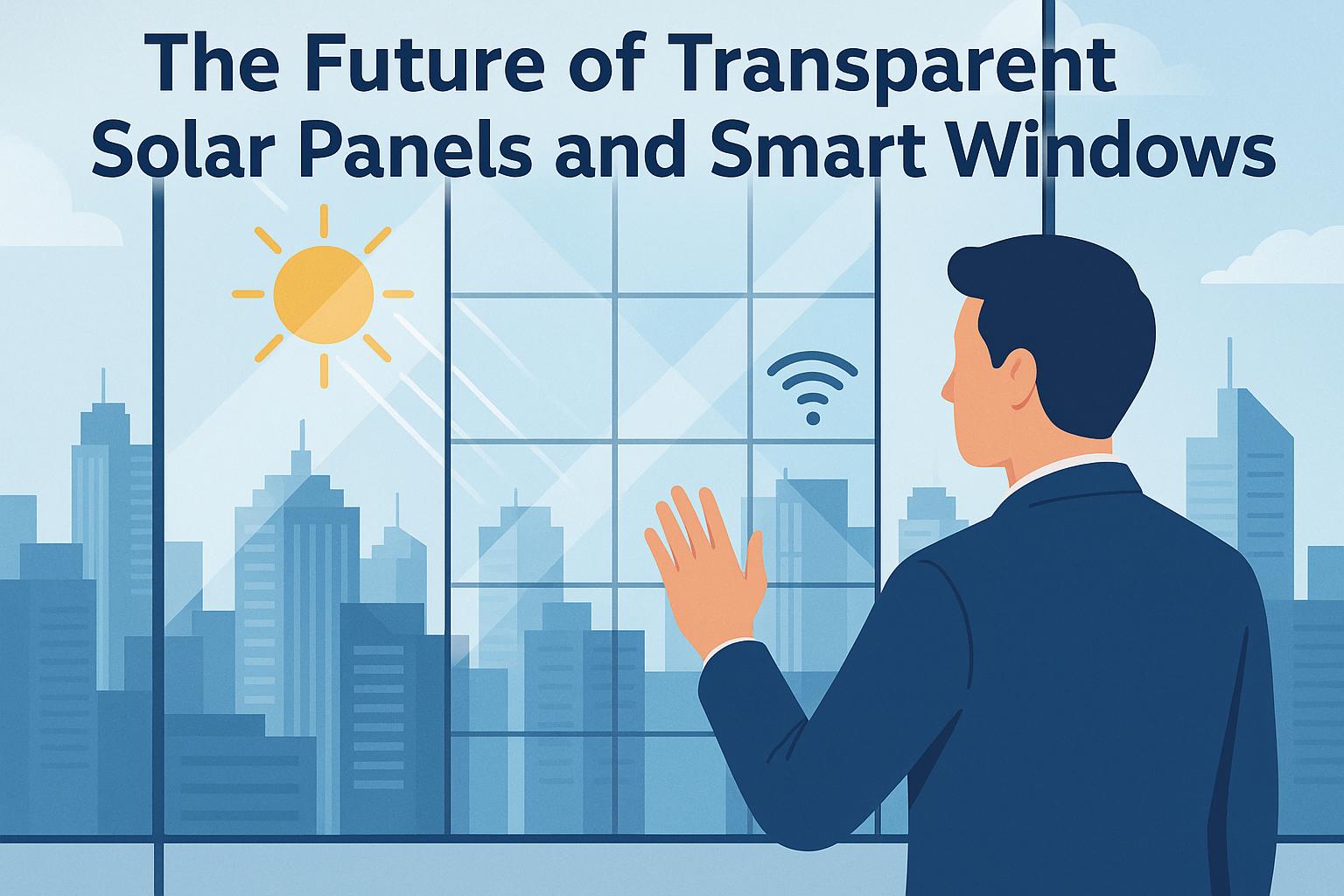
The Emergence of Transparent Solar Panels
Transparent solar panels signify a noteworthy progression in the field of photovoltaic technology. These innovative panels facilitate the capture of solar energy without detracting from the visual appeal of the surfaces they are applied to, particularly building surfaces like windows. At the core of these panels are organic photovoltaic cells engineered to capture ultraviolet and infrared light. They convert this light into electricity while maintaining their transparency in the visible spectrum, effectively creating opportunities for novel applications in urban settings.
The Integration of Transparent Solar Panels in Urban Environments
A primary advantage of transparent solar panels lies in their capability to be effectively integrated into urban environments where space is often a significant constraint. These panels have the potential to be installed on building facades, windows, and even smartphone screens, providing solar energy solutions in areas where traditional panels would be impractical due to size or aesthetic considerations. Urban planners and architects are increasingly viewing these panels as a versatile solution, blending renewable energy capacity with cutting-edge architectural designs.
How Transparent Solar Panels Work
The underlying technology of transparent solar panels hinges on the utilization of specialized organic compounds. These compounds are adeptly engineered to absorb portions of the light spectrum that aren’t visible to the human eye, primarily focusing on ultraviolet and infrared rays. These rays are harnessed to produce electricity, while visible light continues to pass unimpeded through the panel. This characteristic quality renders transparent panels suitable for glass surfaces, such as building windows and electronic displays.
Efficiency and Technological Challenges
While the promise of transparent solar panels is significant, the efficiency challenges are notable. Presently, these panels exhibit an efficiency range between 5% to 7%. This is in contrast to more traditional photovoltaic panels, which boast efficiencies of over 20%. The efficiency gap is largely attributed to the current limitations in materials and technology deployed in transparent panels. Despite these limitations, researchers globally are continuously exploring new materials and refined structural designs to enhance performance. They aim to bridge the efficiency gap while maintaining the transparency that is central to the panel’s applications.
Research Directions and Innovations
Research in this domain is driven by the quest for innovative materials that offer both high performance and aesthetic appeal. Nanostructures, bio-inspired designs, and advanced organic compounds are some of the research frontiers. By experimenting with these elements, scientists are pushing the boundaries of efficiency and exploring ways to make transparent solar panels more commercially viable. The goal is to increase their efficiency without compromising transparency, which remains a crucial factor for their integration into everyday applications like windows and screens.
The Role of Smart Windows
Smart windows represent a synergistic technology that complements transparent solar panels, offering enhanced control over ambient light and heat ingress in buildings. These windows employ various technologies, including electrochromic, thermochromic, and photochromic materials, to adjust the amount of sunlight entering a space. Their ability to dynamically alter tint and transparency allows smart windows to optimize indoor environments, contributing to energy efficiency by reducing reliance on artificial lighting and climate control mechanisms.
Smart Windows and Energy Conservation
The seamless integration of smart windows into energy systems highlights their role in achieving substantial energy conservation. By modulating sunlight and heat entry, these windows ensure reductions in energy consumption for lighting and air conditioning. This not only lowers electricity bills but also reduces the overall energy load of a building. Furthermore, smart windows contribute to enhancing occupant comfort, creating environments that require less energy to maintain desired conditions.
Market Potential and Uptake
As the technology behind smart windows matures, their market potential expands. They are increasingly being adopted across various sectors, from commercial buildings to residential properties, showcasing their versatility and functionality. As manufacturers scale up production and research brings down costs, the broader adoption of smart windows can be anticipated. This trend is backed by the growing global emphasis on sustainability and energy efficiency in building design.
Future Outlook
The future holds considerable promise for both transparent solar panels and smart windows. As research and development efforts continue to evolve, these technologies are poised to become more efficient and economically accessible. This evolution is critical to their wider adoption in both residential and commercial settings. The combination of aesthetic integration with functional advancement positions these technologies to play a significant role in modern architecture’s sustainability objectives.
Contributions to Sustainability Goals
By enhancing the integration of solar technology in urban settings without compromising aesthetics, transparent solar panels contribute to the broader sustainability goals focused on reducing carbon footprints and improving energy efficiency. Similarly, smart windows’ ability to regulate building environments naturally aligns with energy conservation efforts. Together, they present a formidable approach to advancing sustainable construction and energy practices.
Innovation-Driven Progress
The sustained momentum in innovation and development is a testament to the substantial interest and investment in these technologies. As efficiencies improve and costs reduce, the barriers to entry diminish, leading to broader applications and more widespread installations. In coming years, both transparent solar panels and smart windows are expected to not only redefine architectural design but also to significantly impact energy consumption patterns globally, furthering global sustainability efforts.